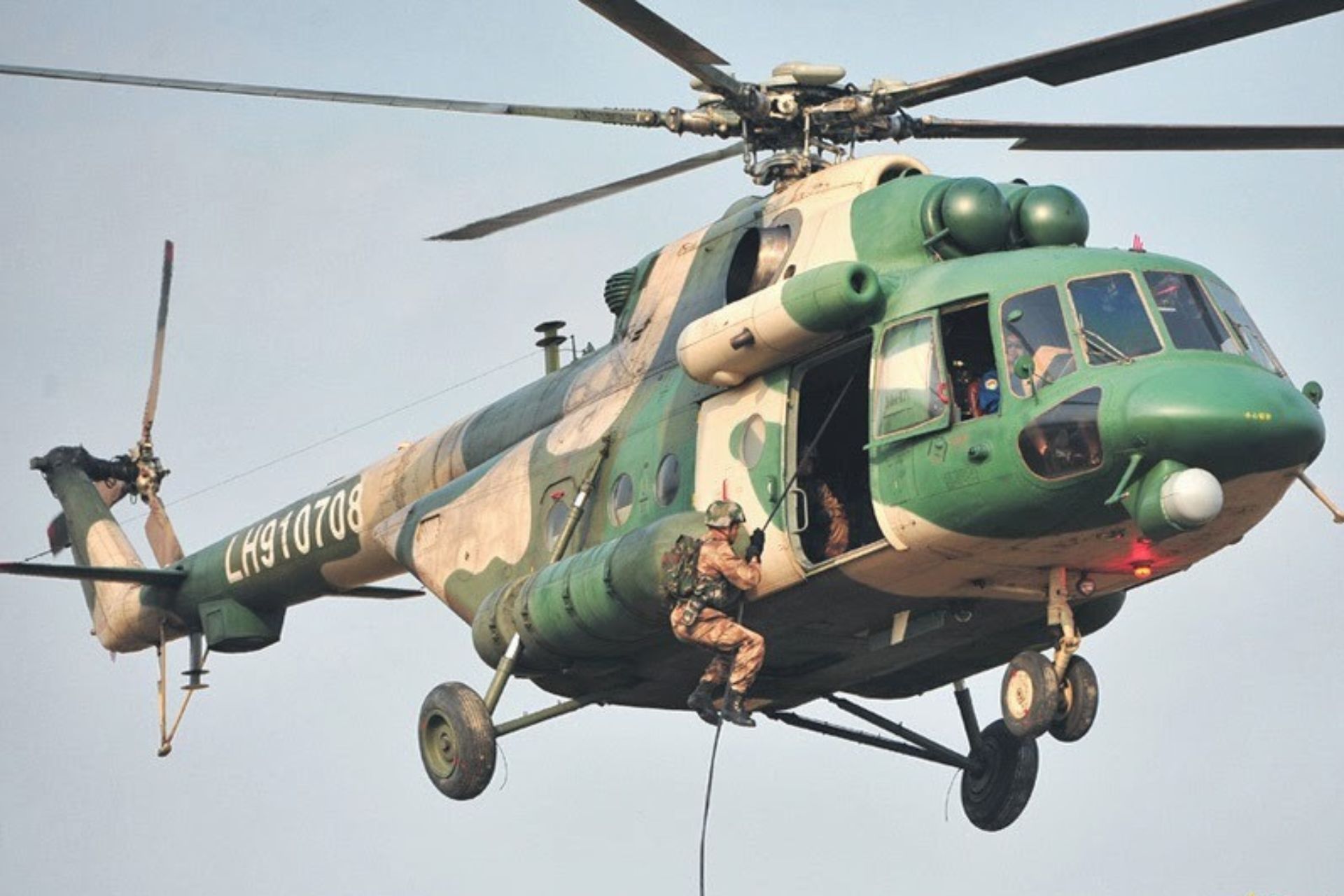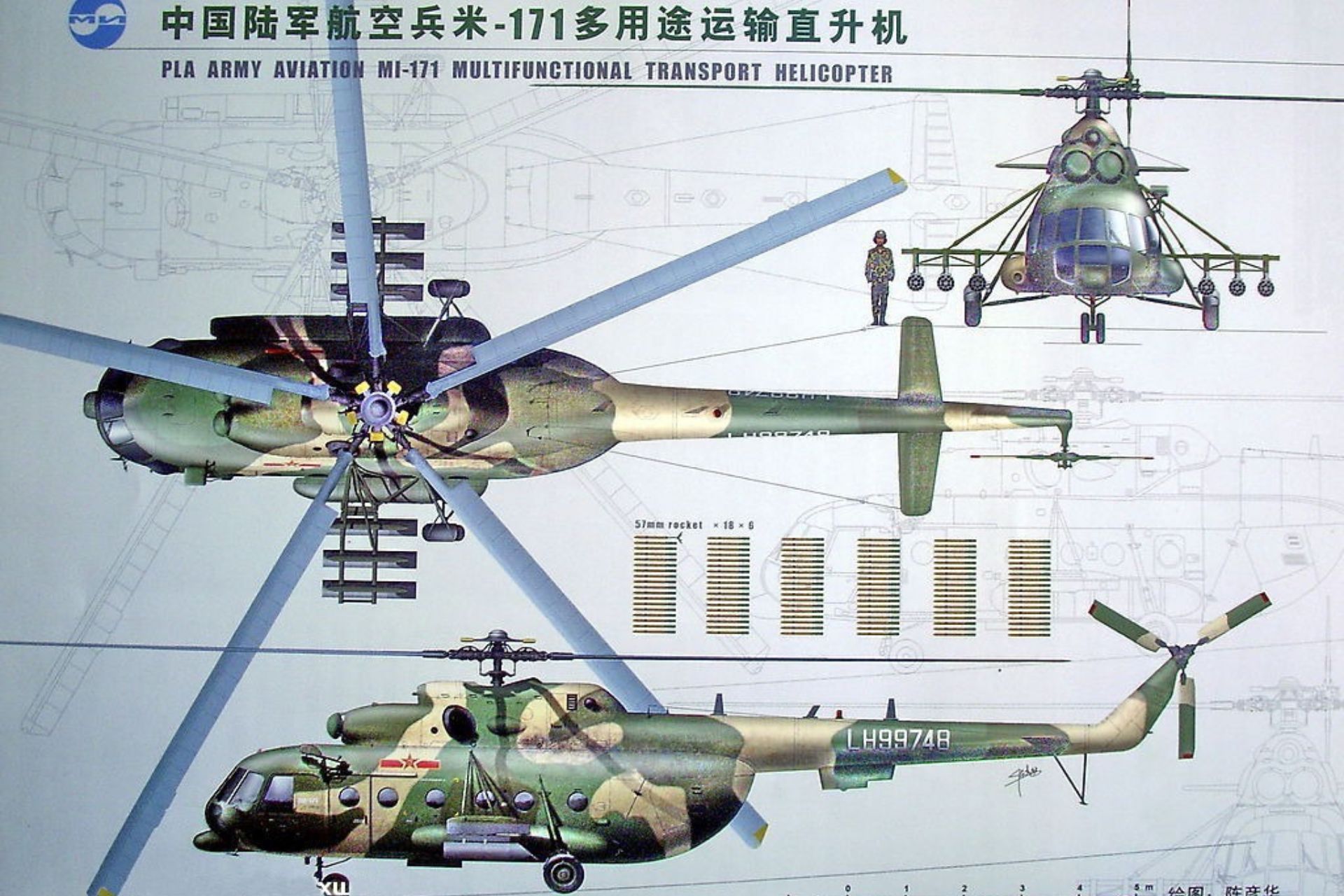Breaking News
Analysis: Why China Continues to Purchase Russian Mi-171 Helicopters Despite Its Technological Advances.
Amid rapid modernization of its military, China continues to purchase Mi-171 helicopters from Russia, despite having developed its own aircraft. This decision raises questions about why China, capable of producing modern helicopters, still invests in this Russian platform. The Mi-171, with its proven capabilities and reliability in extreme conditions, continues to appeal to the People’s Liberation Army (PLA)
Follow Army Recognition on Google News at this link

Pictured above is a Chinese Mi-171 armed with 108 57mm rockets distributed in 6 rocket pods (Picture source: Chinese Army)
The Mi-171 is an evolution of the well-known Soviet Mi-8 helicopter, developed by Russia in the 1990s. Designed to be versatile, this helicopter can perform a wide range of missions, from troop and material transport to rescue operations in challenging environments. Its VK-2500 engine, known for its reliability, provides the power needed for high-altitude operations and harsh climates. The helicopter is also equipped with advanced protection systems, such as electronic countermeasures and reinforced armor, making it suitable for operations in hostile environments.
Since it began production, the Mi-171 has been adopted by many countries, particularly in Asia, Africa, and the Middle East, gaining a reputation for robustness and reliability. China acquired its first Mi-171 helicopters in the 1990s and now possesses approximately 200 units, used in various roles including mountain rescues, disaster relief operations, and troop transport. The Mi-171 can carry up to 4,000 kg of cargo, either internally or via sling load, and can also accommodate up to 26 passengers. Equipped with two Klimov TV3-117VM turboshaft engines, this model is designed for high-altitude operations, allowing takeoffs and landings at altitudes up to 4,000 meters and horizontal flight up to 6,000 meters. The model continues to evolve, with recent versions featuring more powerful VK-2500 engines, offering increased load capacity and enhanced flight safety.

China acquired its first Mi-171 helicopters in the 1990s and now possesses approximately 200 units, used in various roles including mountain rescues, disaster relief operations, and troop transport (Picture source: Chinese Army)
China's Strategic Interest in the Mi-171
China’s continued interest in the Mi-171 is driven by several factors. First, its ability to operate in difficult conditions, particularly at high altitudes, is a major asset for the PLA, especially in regions like Tibet and the border with India, where geographical challenges present specific operational demands. The more powerful VK-2500 engine allows the Mi-171 to carry heavy loads even at high altitudes, which is crucial for operations in these areas.
Secondly, the versatility of the Mi-171 makes it indispensable for the PLA. This same aircraft can be used for troop transport, logistical support, humanitarian missions, and even combat operations, thanks to its armament and ability to carry up to 16 fully equipped soldiers. This versatility reduces the need to acquire multiple types of helicopters for different missions, thereby simplifying logistics and maintenance.
Another significant factor is cost. Compared to Western helicopters like the American UH-60 Black Hawk, the Mi-171 is much more affordable, with an estimated cost of $6 million per unit, compared to $50 million for a Black Hawk. This price difference allows China to acquire a large number of helicopters to equip its forces more extensively while optimizing its military budget. Politically, it also makes sense for China to procure from Russia rather than from the United States.

The Mi-171's ability to operate in difficult conditions, particularly at high altitudes, is a major asset for the PLA (Picture source: Chinese Army)
Comparison with Indigenous Helicopters: Why Not the Z-20 and Z-18?
China has developed several indigenous helicopter models, notably the Z-18 and Z-20, which are theoretically capable of performing missions similar to those of the Mi-171. However, despite these advancements, these models are not yet considered full successors to the Mi-171.
The Z-20, often compared to the American Black Hawk, has yet to demonstrate reliability equivalent to that of the Mi-171 in extreme conditions, particularly at high altitudes. Additionally, the Z-20’s protection and armament capabilities are not as developed as those of the Mi-171, limiting its effectiveness in intensive combat situations.
As for the Z-18, although it is a heavy transport helicopter with impressive capabilities, it performs less effectively than the Mi-171 in high-altitude environments, and its production cost is also higher. These limitations explain why the PLA continues to rely on the Mi-171 for critical missions, where reliability and robustness are paramount.
China's decision to continue acquiring Mi-171 helicopters from Russia, despite developing its own models, illustrates a military pragmatism focused on efficiency and reliability. This choice highlights the PLA's ongoing confidence in the proven capabilities of the Mi-171, particularly in contexts where indigenous helicopters have yet to prove their full effectiveness. The Mi-171 remains a key component of China’s arsenal, and its continued acquisition may signal a tacit acknowledgment of the current limitations of Chinese models. In the near future, it will be interesting to see whether this trend persists or if Chinese helicopters eventually take over, thereby strengthening China’s technological independence.


























